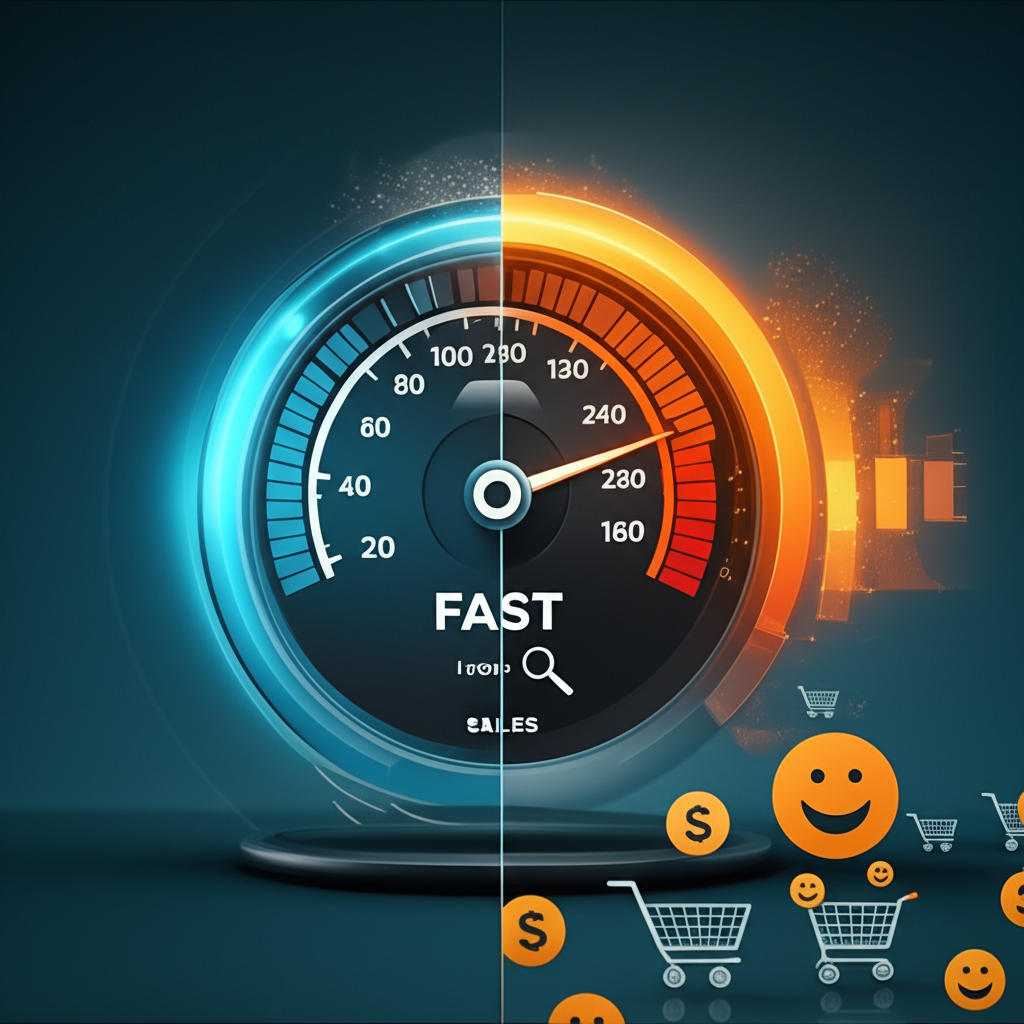- Why Website Speed Matters for SEO
- Impact on Mobile Search Rankings
- Core Web Vitals and Website Speed
- How Website Speed Impacts Sales
- The Cost of Slow Loading Times
- Improving User Experience with Faster Load Times
- Strategies to Improve Your Website Speed
- Website Speed Optimization: An Ongoing Process
Website Speed: Crucial for SEO & Sales
Website speed is a critical factor for both search engine optimization (SEO) and sales. In today’s fast-paced digital world, users expect websites to load quickly and efficiently. A slow website can lead to a poor user experience, increased bounce rates, and ultimately, lost revenue. This article will explore the importance of website speed, its impact on SEO and sales, and provide actionable strategies to improve your website’s performance.
Why Website Speed Matters for SEO
Google and other search engines prioritize user experience. A slow-loading website contributes negatively to user experience, signaling to search engines that the site may not be providing the best possible experience. This can lead to lower rankings in search results, making it harder for potential customers to find your business. In fact, Google has explicitly stated that page speed is a ranking factor for both desktop and mobile searches.
Impact on Mobile Search Rankings
With the increasing dominance of mobile browsing, website speed is even more crucial. Mobile users are often on the go and have less patience for slow-loading websites. Google’s mobile-first indexing means that the mobile version of your website is the primary version used for indexing and ranking. Therefore, optimizing your website’s speed for mobile devices is essential for achieving high rankings in mobile search results.
Core Web Vitals and Website Speed
Google’s Core Web Vitals are a set of metrics that measure real-world user experience focused on loading performance, interactivity, and visual stability. These vitals are now ranking signals, further emphasizing the importance of website speed and overall user experience. The key metrics within Core Web Vitals include Largest Contentful Paint (LCP), First Input Delay (FID), and Cumulative Layout Shift (CLS). Addressing these metrics directly through optimization efforts will significantly impact your website’s ranking potential.
How Website Speed Impacts Sales
Beyond SEO, website speed directly influences sales and conversions. Every second of delay in page load time can significantly impact your bottom line. Studies have shown a direct correlation between page load time and bounce rate, with bounce rates increasing dramatically as page load time increases. A high bounce rate indicates that users are leaving your website without engaging with your content or making a purchase.
The Cost of Slow Loading Times
Slow loading times can lead to lost sales and decreased customer satisfaction. When users encounter a slow website, they are more likely to abandon their shopping carts, leave negative reviews, and choose a competitor with a faster, more responsive website. This can result in significant revenue loss and damage your brand reputation.
Improving User Experience with Faster Load Times
A fast-loading website provides a positive user experience, making it easier for customers to navigate your site, find the information they need, and complete their desired actions. This positive experience fosters trust and encourages users to spend more time on your website, increasing the likelihood of conversions and repeat business.
Strategies to Improve Your Website Speed
Optimizing your website speed requires a multi-pronged approach. Here are some key strategies to implement:
Optimize Images: Compress images without sacrificing quality to reduce file size and improve loading times. Use modern image formats like WebP for better compression.
Leverage Browser Caching: Enable browser caching to store static assets like images, CSS, and JavaScript files on the user’s device. This reduces the amount of data that needs to be downloaded on subsequent visits, resulting in faster load times.
Minify CSS and JavaScript: Remove unnecessary characters and whitespace from your CSS and JavaScript files to reduce file size and improve download speed.
Utilize a Content Delivery Network (CDN): A CDN distributes your website’s content across multiple servers located around the world. This allows users to access your website from the server closest to their location, reducing latency and improving loading times.
Choose a Fast Web Host: Your web hosting provider plays a critical role in your website’s speed. Opt for a reputable host with fast servers and optimized infrastructure.
Mobile Optimization: Design your website with mobile users in mind. Implement responsive design and prioritize mobile-first indexing to ensure a fast and seamless experience on all devices.
* Reduce HTTP Requests: Minimize the number of HTTP requests required to load your website by combining files, using CSS sprites, and optimizing fonts.
Website Speed Optimization: An Ongoing Process
Optimizing website speed is not a one-time task but an ongoing process. Regularly monitor your website’s performance using tools like Google PageSpeed Insights and GTmetrix to identify areas for improvement. By prioritizing website speed, you can significantly improve your SEO, enhance user experience, and ultimately, boost your sales and revenue.











Leave a Reply